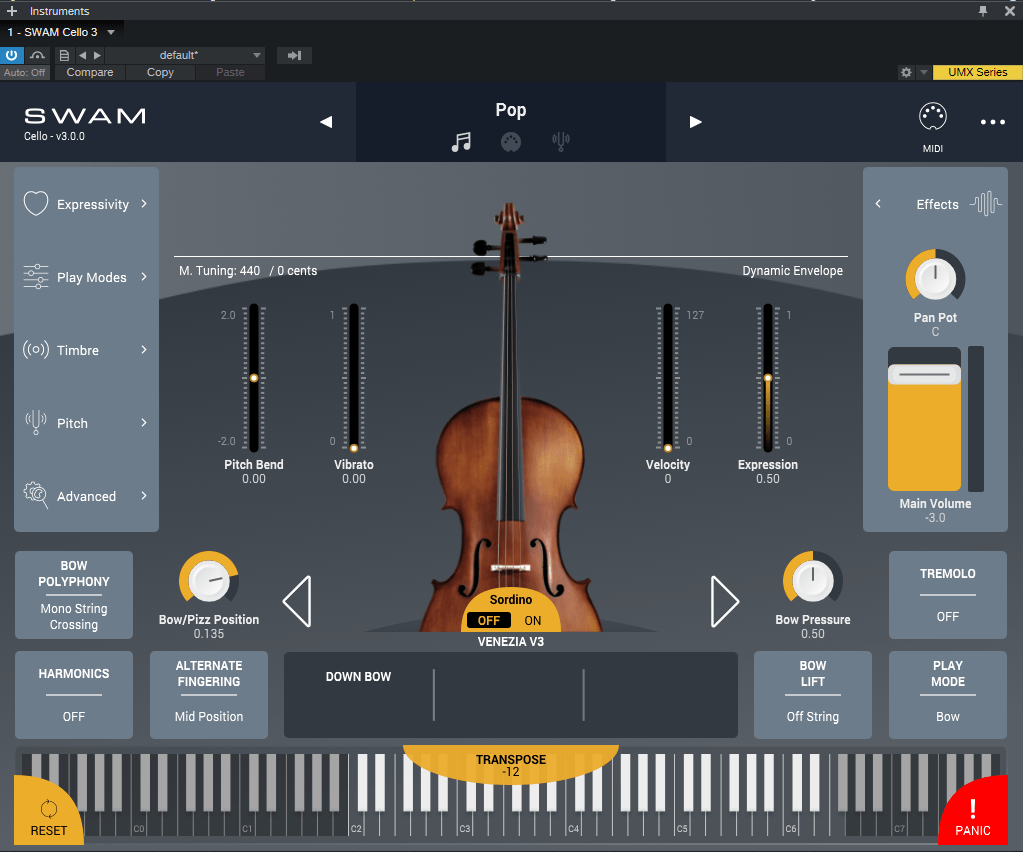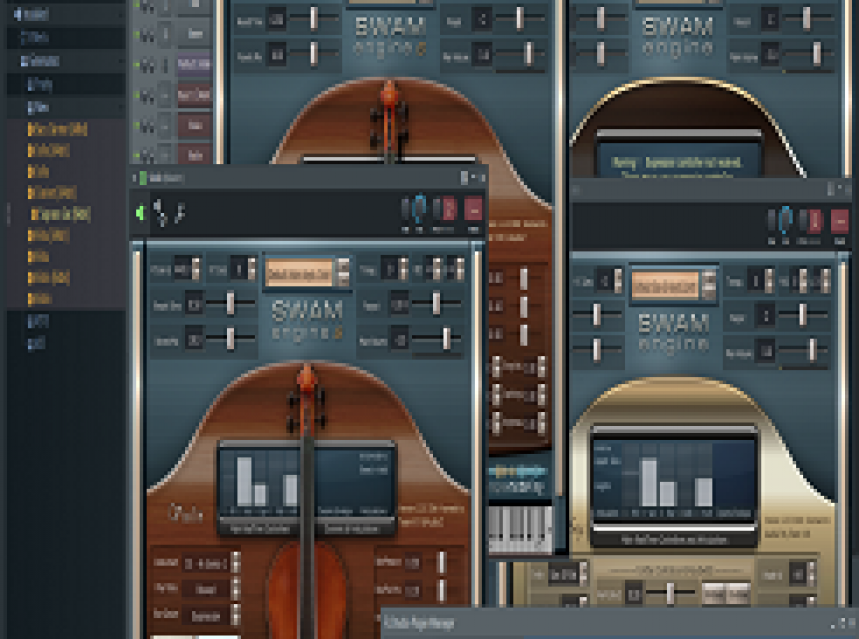Swam Engine
The SWAM engine is a platform developed by Audio Modeling for their SWAM-based instruments. It is extremely compatible with the Seaboard RISE and GRAND and easy to set up.
SWAM instruments (like any other virtual instrument) can be successfully used without the need for any additional hardware by drawing the controller curves and programming the notes directly in the host sequencer.
ROLI Dashboard Settings
Ensure that the MIDI Settings in ROLI Dashboard are set as shown below.
SWAM Flutes, like all SWAM Engine digitally handcrafted acoustic instruments, are never a simple recording of notes via sample libraries, but rather a set of real virtual instruments based on their traditional counterparts. Our technology allows you to fully control the expression of any virtual acoustic instrument: start playing for real. The SWAM engine is a platform developed by Audio Modeling for their SWAM-based instruments. It is extremely compatible with the Seaboard RISE and GRAND and easy to set up. It is extremely compatible with the Seaboard RISE and GRAND and easy to set up. To improve search results for Swam Engine try to exclude using words such as: serial, code, keygen, hacked, patch, warez, etc. Simplifying your search query should return more download results. Many downloads like Swam Engine may also include a crack, serial number, unlock code or keygen (key generator).
We have selected:
- MIDI Mode: MPE
- MPE Zone: Lower
- No. MIDI Channels: 15
- Pitch Bend Range: 48
Note: SWAM instruments earlier than Woodwinds 2.8.0 and Solo Strings 2.0.0 have a maximum pitch bend range of 12 semitones. If you're using one of these older versions, set ROLI Dashboard's 'Pitch Bend Range' to 12 semitones. We recommended updating SWAM to the latest version at my.audiomodeling.com.
Setting SWAM to respond to the Seaboard’s dimensions of touch
SWAM is able to receive and respond to the Seaboard's dimensions of touch automatically:
- Open the SWAM instrument
- Click “Reset”
- Select “Default Seaboard”
- Start playing your Seaboard!
If you're using an older version of SWAM or would like to manually assign the dimensions of touch, read on.
The most common modulation in SWAM is called 'Expression.' SWAM will want you to assign a controller to this before producing any sound.
In this example, we'll assign the Seaboard's Press (transmitted as Aftertouch) to SWAM's Expression.
Click on Options → MIDI Mappings → Assign AT (Aftertouch) next to Expression
Glide
Glide is transmitted as pitch bend. Earlier we set the Seaboard's pitch bend range to 48 semitones in ROLI Dashboard, so now we will do the same in SWAM so that the pitch bend range matches.
To set SWAM's pitch bend range:

Note: this image shows a pitch bend range of 12 semitones, suitable for SWAM instruments earlier than Woodwinds 2.8.0 and Solo Strings 2.0.0. If you're using a recent version, instead set ROLI Dashboard's 'Pitch Bend Range' to 48 semitones.
Additional controllers
Mapping other controllers to parameters in SWAM is performed in the same way as Press at the start of this article. Go to: Options → MIDI Mappings
Each parameter has a drop down menu. Simply select the input that should affect that parameter.
Swan Engineering And Supply
For example, Slide is transmitted as MIDI CC 74. To assign Slide to 'Bow Position', select CC 74 in the drop-down box next to 'Bow Position'.

Swam Engine Violin
Click here to see the full list of messages being sent by the Seaboard.
These amazing Audio Modeling SWAM virtual instrument software products respond superbly to your breath expression and we are very happy to finally offer these virtual instruments to our wind controller and breath controller customers.
If you are interested in purchasing any of these Audio Modeling SWAM virtual instruments for use with your wind controller, breath controller, or MIDI controller, Email Matt for your special DISCOUNT PRICE that is the best anywhere. Patchman Music is taking orders and delivering these products via email. Order today from Patchman Music and save money!
Be sure to check out all the wonderful demos of these products on YouTube.
Please note the system requirements in the descriptions below.
Also note that these software virtual instruments do not load inside your wind controller or MIDI controller. They are software instruments that run on your Mac or PC computer which are then controlled with your wind controller, breath controller, or MIDI Controller via MIDI or USB connection. If you need a USB to MIDI interface to connect your wind controller or breath controller to your computer, we sell these as well. Email Matt for details.